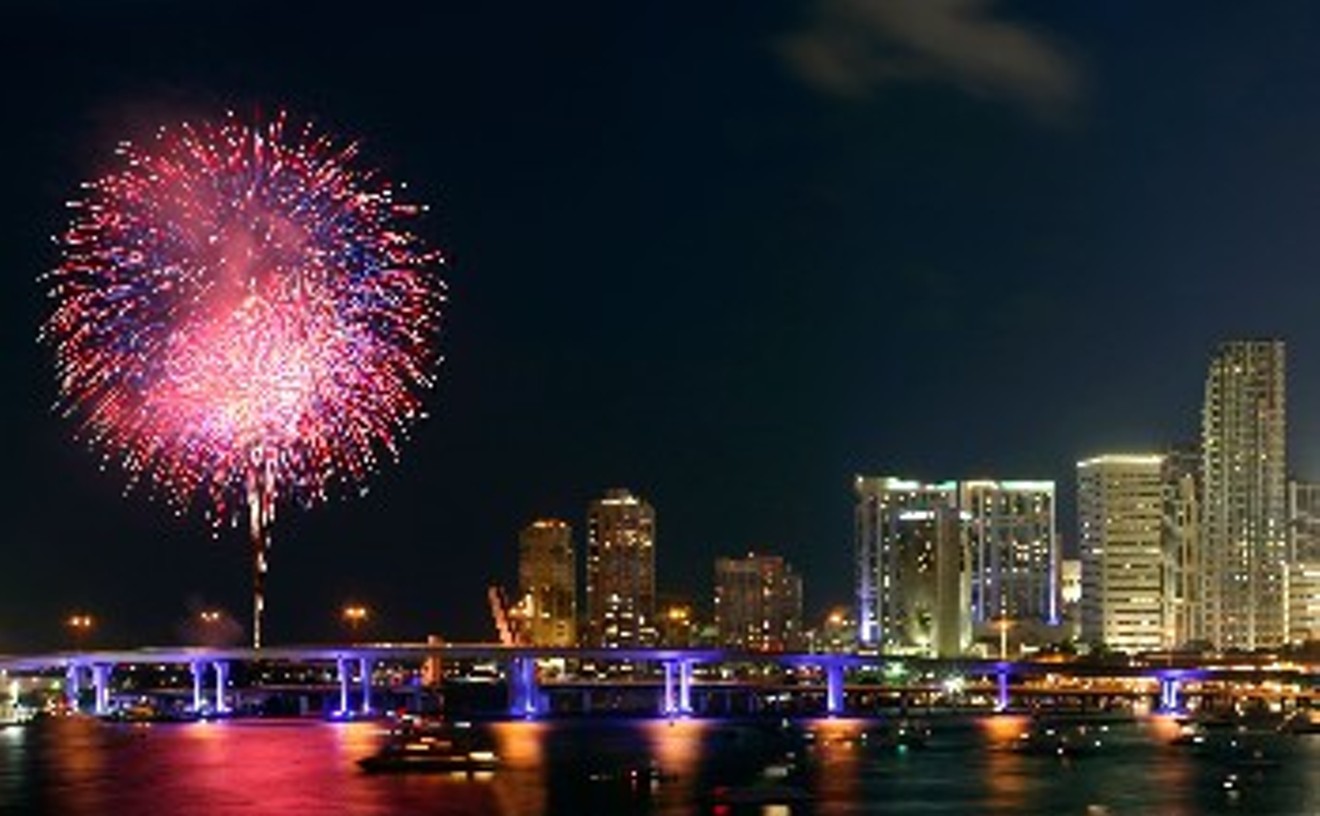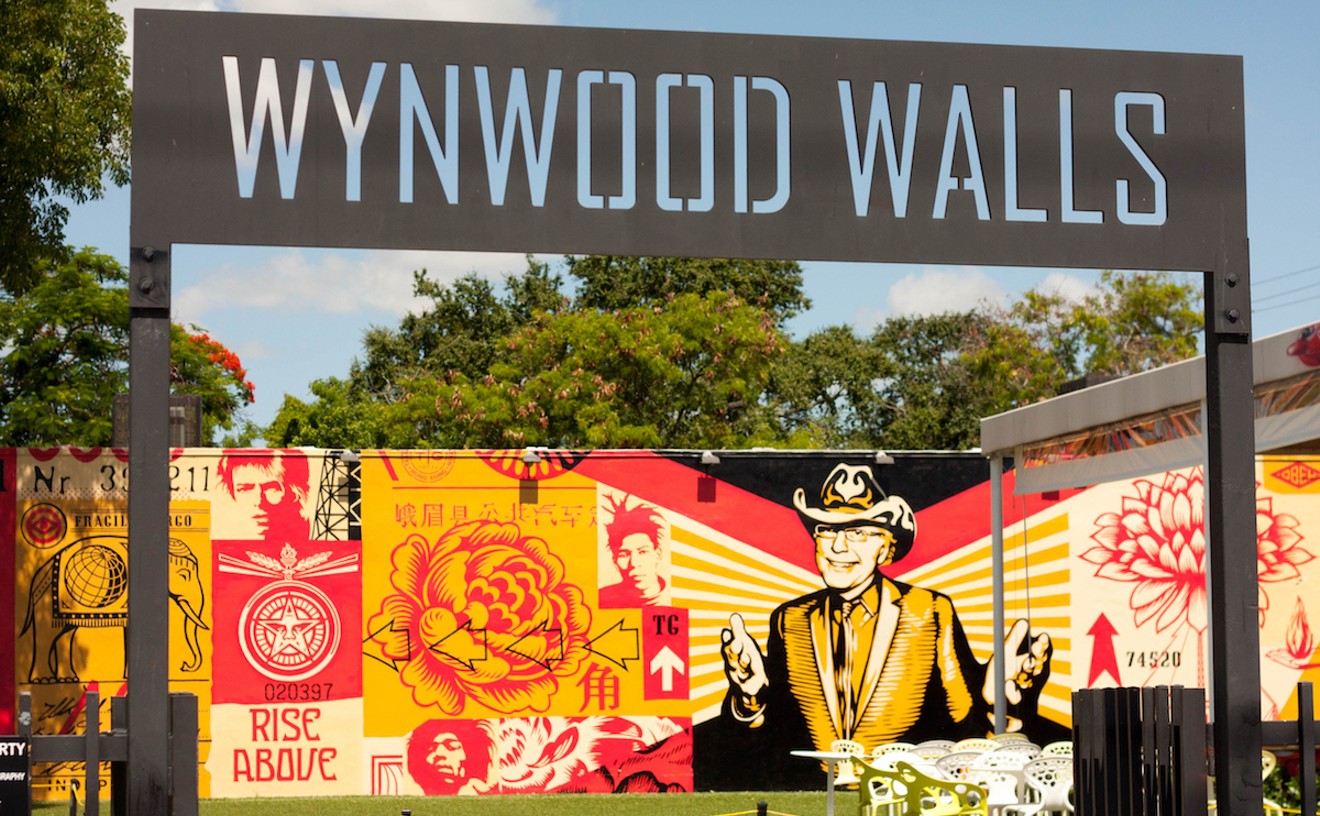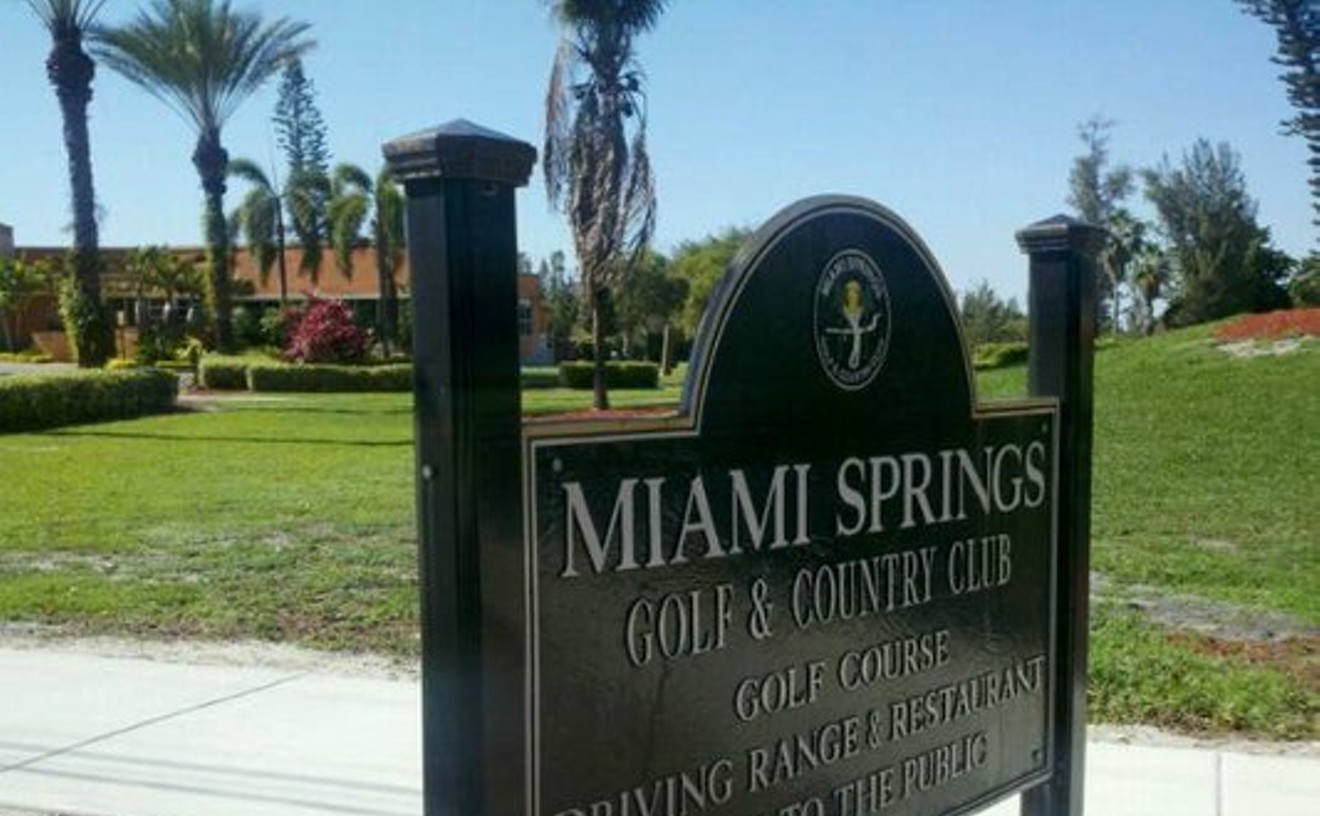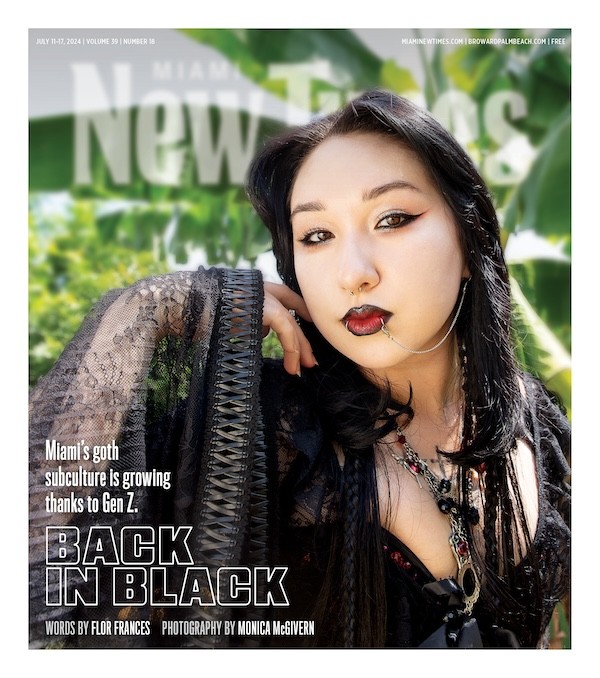His fists are worth $750,000. And his smile is gold — literally. After winning two medallas de oro fighting for the Cuban boxing team at the 2000 and 2004 Olympics, Guillermo "El Chacal" Rigondeaux returned to the island, resumed his ascetic training schedule, and lived like a common campesino. He was a national hero. He was even — according to another Cuban boxing legend and two-time Olympic champ, Héctor Vinent — "the greatest boxer who ever lived." But he was still broke. And his prize medallions were worth only a couple hundred pesos. So Guillermo settled on fixing his teeth. "I melted my Olympic medals," he once explained, "into my mouth." A few years later, though, finally fed up with a life of poverty and the lack of opportunity in Cuba, Rigondeaux decided to defect. And just like so many of the island's fighters over the past six decades (not to mention several world-class Cuban contemporaries, including Yuriorkis Gamboa and Erislandy Lara), he moved to Miami. But already 29, Guillermo was turning pro at an advanced age. And unlike Gamboa's and Lara's careers, Rigondeaux's was starting slow. Despite being widely recognized as one of the best amateur fighters of the past half-century, Rigondeaux stands only five feet five inches tall. He weighs 122 pounds. And he isn't a headhunter. He is, however, a preternaturally skilled boxer with serious punching power. So over the past couple of years, he quietly compiled a perfect 12-0 record. He won the WBA Super Bantamweight belt. And then he broke out, methodically maiming Filipino-American champ Nonito Donaire (a WBO titleholder who's been almost universally heralded as a top-five pound-for-pound fighter) over the course of a 12-round bout in April. He won the unanimous decision. He cashed a $750,000 check. He flashed that gold smile. And even the naysayers were forced to admit that "El Chacal" is most definitely the real deal.
Best Road to Avoid
SW Eighth Street Between I-95 and Brickell Avenue
Brickell real estate is back, baby! Shoot yourself in the foot if you didn't grab a cut-rate condo when prices hit rock bottom. The endless traffic jams on this short span should be a constant reminder that you missed the boat. Gray monoliths have begun rising all along Eighth Street as developers have found money to build again. At any time of day, construction can squeeze the three-lane road down to only one. Work on Hong Kong-based Swire's billion-dollar Brickell CitiCentre has closed South Miami Avenue for weeks at a time. You're as likely to run into a mind-numbing traffic jam in the middle of the night or day as at rush hour.
Best Parking in Miami Beach
Seventh Street and Collins Avenue Garage
When Dante wrote about the Ninth Circle of Hell, he could well have been describing weekend parking on South Beach. Midafternoon on a Saturday or Sunday is like a visit with Satan himself. Honking, profanity-spewing, and middle-finger-flying are all par for the gridlocked course. But the Seventh Street Garage is a gift from above. For $1 per hour (cheaper than parking on the street), you can leave your ride a stone's throw from everything you need for a successful Saturday afternoon — Wet Willie's, the News Café, volleyball courts, and the brilliant-blue waters of the Atlantic Ocean. There are 646 spots available, but unsurprisingly, Jersey Shore wannabes and fanny-pack-wearing tourists sometimes catch on as the day progresses, so it's key to arrive early; i.e., before 1 p.m.. OK, that's early, but dragging yourself out of bed is so worth it. Hell, you can always catch a little snooze in the sunshine.
Best Cheap Thrill
InterContinental Miami

Let's face it. Downtown Miami isn't that much fun. Despite lots of new businesses and condos, it's mostly quiet at night unless you're visiting one of the clubs on NE 11th Street. But wait! What's that on the waterfront? A 19-story-high dancing girl? Yeah, the InterContinental Hotel, which stands at the corner of the Miami River and Biscayne Bay, just completed a $30 million upgrade. It not only improved suites and added a first-class restaurant in the lobby but it also installed hundreds of computer-controlled lights in the exterior windows. Now, it can display a dancing girl with long, flowing hair. Or it can switch it to an erupting volcano. Or it can say "Welcome to Miami" in big block letters. And you can enjoy it for free.
- 100 Chopin Plaza, Miami, 33131 Map
- 305-577-1000
- icmiamihotel.com
Best Not-So-Cheap Thrill
Private Airboat Safari in the Everglades
It is said that there's nothing like going on safari in Africa and watching the sun rise on the Serengeti as wild animals roam the African plains. Here's the problem — it takes two whole days and lots of green to get to Kenya. But what most Miamians don't realize is that they can take a wildlife safari just as exotic without ever hopping on an airplane. Everglades National Park comprises about 1.5 million acres of land and is home to more than 350 species of birds, 27 species of snakes, 40 species of mammals, and hundreds of other reptiles and amphibians. The "River of Grass" has been called one of the great biological wonders of the world. Unlike many other wildlife areas, much of the Everglades cannot be accessed by foot or car — only by airboat. Fortunately, an airboat is one of the coolest modes of transportation ever. A flat-bottomed boat, powered by a gasoline engine with a big propeller, is fast, fun, and a little deafening. A two-hour private airboat safari for two starts at $375 and traverses about 17 miles of a secluded section called the Everglades and Francis S. Taylor Wildlife Management Area, which is abundant with wildlife. Are you a birder? Do you want to be surrounded by alligators? Or do you simply want to go fast? Tell your captain what you want to see and he'll tailor the safari to suit. Although no animal sightings are guaranteed, you are sure to have a wild time without ever getting your passport stamped.
- 17696 SW 8th St., Miami, 33194 Map
- 888-893-4443
- www.airboatineverglades.com
Best Kids' Thrill
Play Au Lait
Parents, rejoice! Entertaining your children no longer has to be at the expense of your sanity. Play Au Lait is among South Florida's largest active play gyms. It'll make Junior happy and active in a safe, clean, environment while you enjoy delicacies from the gourmet café or get some work done on the free Wi-Fi. Three play areas separated by age are designed for having fun, releasing stress, and building healthy bodies. Parents can host catered parties or join events like Kindermusik, an educational music and movement program, or LOTUS Parent Series, a support discussion group on raising kids. You can read in peace here and sip on champagne. Yes, it has that too. Admission rates vary per age, and the price includes two adults: up to 24 months old, $9.95; 2 to 5 years old, $11.95; and 6 to 12 years, $18.95. It's open Monday to Thursday from 10 a.m. to 7 p.m., Friday and Saturday from 10 a.m. to 8 p.m., and Sunday from 10 a.m. to 6 p.m. And hey, with summer here, there's also camp for age groups 4 to 6 and 7 to 9, and a preschool prep camp for 2- and 3-year-olds.
Best Cheap Kids' Thrill
A Daytime Walk through Wynwood's Murals

OK, so you've been to the Second Saturday Art Walk, and all you can think is, I would never bring my little ones here! It's full of drinking and debauchery. Well, hold on a minute! The arts district that's south of NW 28th Street and Second Avenue is the most interesting slice of Miami. The reason isn't the galleries, it's the street art. Park near the Wynwood Walls at NW Second Avenue and 25th Street, enjoy dozens of paintings and the Wynwood Doors exhibit, then head over to NW Third Avenue and 26th Street, where you can see Eye and Fly by Scott Debus. Continue south and check out Dal East's Wireman at 31 NW 23rd St. and Ballerinas by Anthony Lister at 2300 NW Second Ave. The kids should be worn out by then, so shove 'em in the car and head for lunch and ice cream at Bayside Marketplace.
- 2520 NW Second Ave., Miami, 33127 Map
- 305-531-4411
- thewynwoodwalls.com
Best Golf Course
Miami Springs Golf & Country Club

This place Trumps the Blue Monster! The Biltmore and Crandon Park? They command princely greens fees. So our choice is Miami Springs Golf & Country Club. Miami's oldest muni course and site of the Miami Open, the Springs has hosted Sarazen, Snead, Nelson, and all the greats from the game's golden era . These days, it welcomes scratchers and duffers alike. Fees are reasonable — weekday rates are $25, and weekend rates are $35 (plus cart and tax) — and there's plenty of yardage to challenge Bubba. Miami pioneer Glenn Curtiss and a group of fancy golfers who called themselves the Miami Coconuts built the course and clubhouse in 1923 for $101,000. Four years later, Curtiss sold it to the City of Miami after the Coconuts could not afford the maintenance. For 30 years, the Miami Springs Golf Course hosted the Miami Open. The last one was played in 1955. Later that year, the city burnt the clubhouse to the ground after deeming it an unsafe structure. In 1997, Miami sold the golf course to the City of Miami Springs for $3 million. Today, the course is the forgotten jewel among its more popular cousins in Doral and Coral Gables.
- 650 Curtiss Parkway, Doral, 33166 Map
- 305-805-5180
- miamispringsgolfcourse.com
Best Driving Range
Country Club of Miami
The best place to practice your golf swing in Miami is off the back of your megayacht, placing your perfect golf ball atop a gold-plated tee and swinging your custom titanium driver across the square of real, live Bermuda grass that you had imported from Bermuda (where else?), which was expertly manicured just hours earlier by Ernesto, your attractive (but not threateningly so) yacht gardener. But it turns out that sending golf balls into the ocean like tiny, pockmarked missiles is bad for the environment. Miami manatees have enough problems without having to dodge your shanks. Besides, you're broke. Luckily, the driving range at the Country Club of Miami is the next best place to improve your golf skills. Its grass is well-maintained, and it's open from dawn until dusk. And when you've tired of working on your big swing, there are nearby chipping and putting greens. Head over during Friday-night driving-range happy hour, when buckets of balls sell for $1 from 4 to 7 p.m. (the range is open 4 to 7 p.m. weekdays). Hey, until you and Ernesto sail off into the sunset, it'll have to do.
Best Park
Tropical Park
It's your one-stop park for every outdoor activity. Visitors to Tropical Park can find everything from tennis courts to soccer fields to a football field that regularly hosts high school games. Then there's the equestrian center, where horse enthusiasts can rent stables and participate in regular competitions. Among the courts for basketball and racquetball, you'll find a boxing center offering an amateur program. There's also a two-acre dog park with an obstacle course and lots of shady trees. There are paddle-boat rentals on a lake and another body of water with large-mouthed bass, bluegill, catfish, and more. For those looking to picnic, there is an array of options, from idyllic, hidden-away lakeside spots to rows of shelters for parties. There's even a grassy hill that is among the, ahem, highest pieces of earth in South Florida. It can make for a heck of a ride for daredevil dirt bikers, not to mention one precarious King of the Hill game.
- 7900 Bird Rd., Miami, 33155 Map
- 305-226-8315
- www.miamidade.gov/parks/parks/tropical.asp





